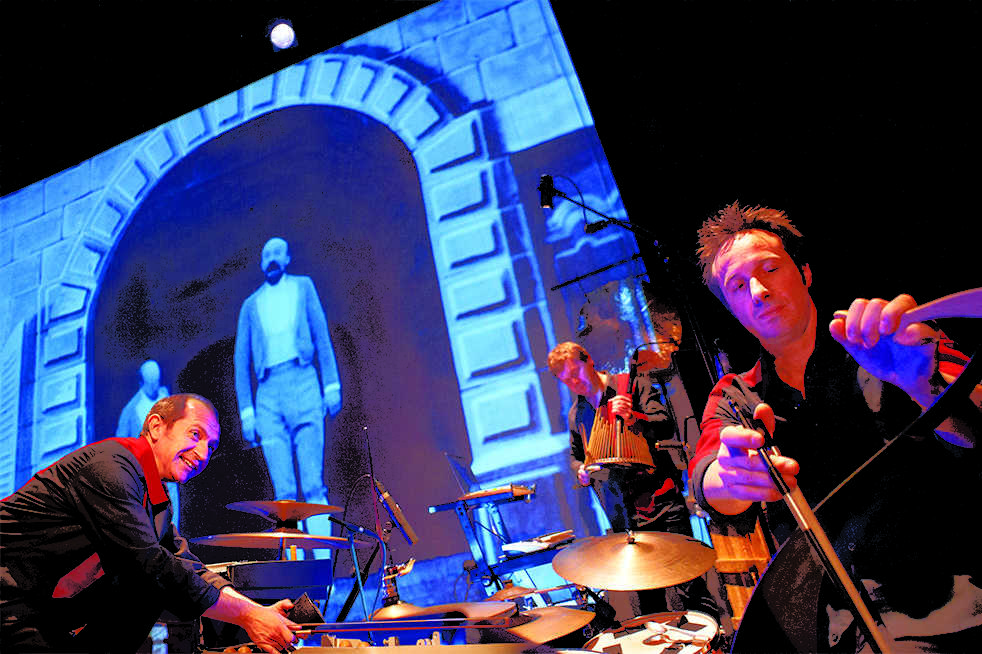Most students at Tech would probably think that French cine-concerts sound a little weird, and they would be absolutely correct. Jean-Francois Alcolea’s “Right in the eye” is no exception. Still, to trivialize this great body of work as merely weird without mentioning its truly fascinating and charismatic qualities would be disingenuous.
“Right in the eye” combines early 20th century French filmmaker George Melies’s collection of short films with original contemporary music influenced by classical impressionist piano, rock and free jazz (composed entirely by Alcolea). A concert of this nature will turn away most who have no interest in engrossing themselves in abstract art, but will captivate and fulfill those who give it the time of day. And who does not enjoy a little eccentricity from time to time anyway?
The Technique spoke with Alcolea after an Atlanta performance of “Right in the eye” on Sunday, Oct. 21 about what inspired him to compose music for Melies’s shorts. With Melies being one the founders of narrative cinema and the inventor of numerous editing techniques still used to this day, it was no surprise to learn that Alcolea wanted to make Melies’s films accessible to and appreciated by the public.
In an effort to accomplish this goal, he fuses the overwhelming silence of early cinema with modern-sounding musical arrangements, giving newfound life to the primitive artform of silent film. Alcolea told the Technique that he spent a year and a half working with his groupmates Fabrice Favriou ou Julien Grolleau and Stephane Brunet to create and perfect the musical compositions, fashion original sound effects and blend everything with the various shorts. All of this together creates an appropriate aesthetic and refreshing identity to Melies works, not acting as a backdrop to it but rather pushing both the music and the film to the forefront of the viewer’s attention.
Before the show, a brief history of Melies’s accomplishments and contributions to cinematography, set design and editing techniques is included to establish context for the cine-concert. This section is perfect for viewers who do not know much about Melies or what his body of work meant for the development of modern cinema.
The cine-concert then takes the audience on a journey through a series of eleven short films, roughly five to ten minutes each, spanning a total length of about an hour and fifteen minutes. Although there are a few drawn out sections in the concert, Alcolea and his crew keep the audience entranced the entire way through, wondering what emotion will be evoked next by the intricate piano, sporadic and avant-garde drumming, rock and roll guitar or any of the other twenty-five instruments and sound-effects devices included in the show. The music covers a wide range of instrumentation, including African-style drumming, progressive and atmospheric chimes and marimba and even a slide whistle.
Alcolea does a fantastic job of establishing the mood of each short, complimenting each using these different styles and musical modes. No part of the music is included without a deliberate purpose. Underwater scenes in the shorts are fantastically represented using the aquaphone, which creates a soothing aura of marine life, while whirring cymbal effects are used to set the tone during a blizzard scene.
Melies’s vibrant hand-colored scenes and sophisticated set designs complement the music and provide a narrative as well, reaching far and beyond what modern audiences probably believe was possible in cinema during the turn of the 20th century. Even though the audience may not understand quite what is going on in every short, the artistic minds of the viewers are left thoroughly satisfied by the waves of sensation breaking over them.
Those who might not known much about Melies before seeing this concert will find themselves able to appreciate what he meant for the history of cinema and art as a whole. Alcolea successfully makes his audience feel what he intends it to as a result of this experience — a crystallization of how cinema and music evoke wonder in those who give it a chance.
